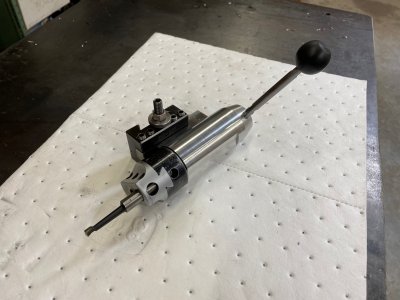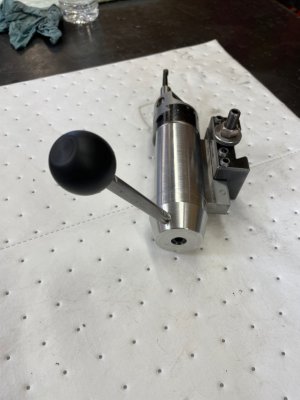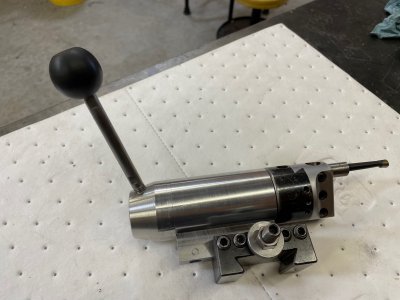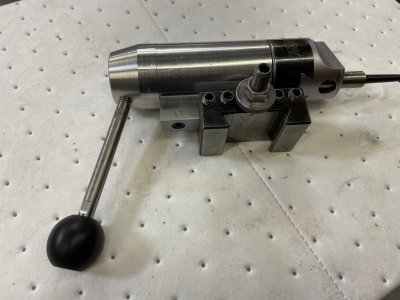- Joined
- May 3, 2017
- Messages
- 1,997
I made a ball/radius turner by copying the one made by Ade Swash in the attached youtube video. I had a Criterion boring head that wasn't in the greatest condition, and had an opportunity to buy one that, after thorough examination, appears to have never been used (still in original case with sealed package of instructions and Allen wrenches). I decided to convert the old boring head into a radius turner for my lathe. The build turned out great (pictures below). My first project was the black Delrin ball on the end of the handle. I'm waiting on some round inserts similar to the ones Ade showed in his video, and I will need to make a holder after they arrive. I'm very satisfied with the result.
But I do have a question. At about 14 1/2 minutes into his video, Ade describes how he took the adjusting screw out of the boring head, drilled and tapped the end of it, made a spacer, and threaded a grub screw into it so that he could adjust the boring head from the opposite side. I tried a Plan B that was almost guaranteed to not work (it didn't) by cutting the threaded section off a socket head screw and epoxying it to the end of the adjusting screw. First time I used it, the epoxy gave. I was hoping to avoid trying it, but it seems the only feasible approach is Ade's. I soon discovered that the screw is very hard. Any tips on how to drill and tap a hole into that screw? (I posted a question on his video, but haven't heard anything back.) As he explains, adjustments are much easier from the off side, but I think I need some guidance on how to accomplish that in a hardened screw.
Thanks for any advice.
Regards,
Terry




But I do have a question. At about 14 1/2 minutes into his video, Ade describes how he took the adjusting screw out of the boring head, drilled and tapped the end of it, made a spacer, and threaded a grub screw into it so that he could adjust the boring head from the opposite side. I tried a Plan B that was almost guaranteed to not work (it didn't) by cutting the threaded section off a socket head screw and epoxying it to the end of the adjusting screw. First time I used it, the epoxy gave. I was hoping to avoid trying it, but it seems the only feasible approach is Ade's. I soon discovered that the screw is very hard. Any tips on how to drill and tap a hole into that screw? (I posted a question on his video, but haven't heard anything back.) As he explains, adjustments are much easier from the off side, but I think I need some guidance on how to accomplish that in a hardened screw.
Thanks for any advice.
Regards,
Terry





